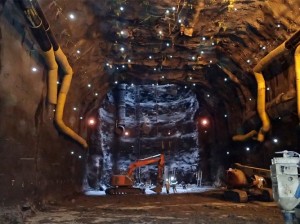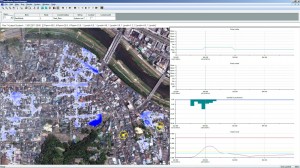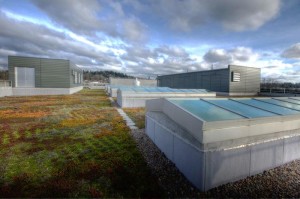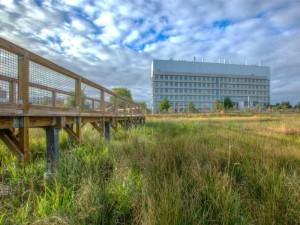The challenge to meet regulatory requirements of stormwater management and the demand to modernize stormwater infrastructure is a growing concern. Bruce Howard, chief of development, performance and delivery for MWH, discusses various approaches that utilities can adopt in providing communities with a much more holistic solution to a growing problem. Utilities and communities who are innovative in their approach and take a longer-term view will be able to provide the solutions that will support their residents for decades to come.
The issue of stormwater has become a management issue and an unfunded liability for cities and utilities across the United States. Increasing regulation, aging infrastructure, outdated combined and storm sewers (CSOs and SSOs), a growing population, and increased urbanization have driven the demand for a more holistic approach to solve flooding and environmental issues from stormwater events. Many cities and utilities are in the early planning stages to address the issue, but they have been staggered at the cost of proposed solutions. Costs involved in solutions required to meet the regulatory requirements can total more than a billion dollars in initial capital investment and can incur further significant increases in operation and management costs for years to come.
This ‘bill’ comes at a most inopportune time. The utility may be bonding limited or required funds would be in competition with other infrastructure needs in a city. Raising or establishing a higher rate structure to raise the capital would be unpopular with ratepayers who are already burdened with increased fees. In addition, operation and management of the new system could require additional, new personnel – a cost that is rarely budgeted that would compete with other priorities all trying to vie for funding within a constrained budget. Simply put, cities and utilities do not have a ready, economical plan to solve the overall stormwater issue.
So how can the issue be resolved? Let’s exam different approaches available and then let the respective utility determine which approach may be best for them.
APPROACHES
The use of new technological tools and materials are beginning to offer cities and utilities a variety of approaches. During the planning phase of the project, each type of approach should be evaluated to develop the bespoke solution required to meet their needs.
Traditional:

MWH is providing preliminary and final design services for the currently under construction Easterly Tunnel Dewatering Pumping Station in Cleveland, Ohio.
The project is part of the $3 billion Easterly CSO Plan Improvements Program and one of the largest combined sewer overflow (CSO) pump station projects in the U.S. and a critical component to addressing CSOs in Cleveland.
The current process is to use water delivery models to evaluate the current and proposed water transport systems, evaluate flooding criteria (i.e. 100-year storm event), size of the treatment works, quantification of the overflow restriction from the regulator, and evaluate the condition of their current infrastructure. These models are then refined and a Long-Term Control Plan is usually developed. The result does provide a conservative solution that satisfies the regulatory requirements and reduces the incidents of flooding. The solution is then agreed with the regulator, the cost estimated, funding aligned and the engineering/construction projects implemented. A typical solution usually entails very large pipes or tunnels (or both), large pumping stations, storage tanks, and a new or upgraded treatment plant. The cost is substantial and all the water flows downstream with little or no apparent reuse and marginal environmental benefit.
Smart Water Systems (Real Time Controls):

Flood Forecasting -
Software is available that links live data sources with a wide range of models to provide detailed, accurate forecasts of water levels, flood depths, flows, velocities, water quality parameters, and sea states.
An emerging engineering solution is to enhance existing water models (for both CSOs and SSOs) and combine them with near-term weather forecasts. The system operators can then use the weather data to run the models (updated as often at 5, 10, and 15 minute intervals) and fine tune the operation to meet the predicative and real-time rainfall. They can then optimize weirs, storage areas, and routing to adjust current flows in the system to allow for increased or specific volumes based upon the location, intensity and speed of the runoff. The results of the real time controls coupled with the more dynamic water transport models provide the operators with more flexibility to manage flow volumes. As volumes can now be managed more effectively, the size of pipes, tanks, tunnels, and treatment plants can usually be smaller thus reducing capital costs. Real time control that couples the near-term weather forecasting with smarter operations is an emerging technology that any utility who is innovative can put this process to good use and save substantial funds. Though less costly, the water still flows directly through the system with little opportunity for reuse.
Multi-Use Projects with Green Infrastructure:

The MWH designed Tri-City Water Pollution Control Plant Expansion Project in Oregon is a state-of-the-art membrane bioreactor treatment center including pervious “green street” pavements, green roofs on all buildings capturing and holding rainwater, and landscaped channels at the sides of roads designed to retain and treat runoff.
The primary reason for the costs associated with stormwater management is the volume and intensity of water resulting from the event. Even with Smart Water Systems the volumes are still large as they must have a degree of conservatism to ensure that localized flooding does not occur. If the volume could be reduced or the impact onto the system could be slowed, the infrastructure needed to transport the runoff could be smaller and less expensive. As part of the overall solution the design and implementation of green infrastructure would be a significant step in reducing the volume and speed of the runoff water. The implementation of green solutions can be accomplished through many low-impact development controls such as the design/construction of pervious pavements, green roof, rain gardens, infiltration ditches, and vegetative swales. As a future planning tool many of these controls should become part of the region’s building codes.

The MWH designed Alewife Wetlands Sewer Separation Project in Cambridge, MA, features an engineered stormwater wetland, creating a natural wildlife habitat. The project will reduce combined sewer overflows from the City’s ‘CAM 004’ area by 84% (43.6 million gallons annually).
The overall collection system can also take advantage of larger controls such as wetland creation. This type of control, though slightly more costly at initial capital cost than other environmental approaches, will store water temporarily resulting in a reduction in size and quantity of other more traditional infrastructure. These environmental solutions reduce nuisance flooding, improve/develop wetlands, recycle water via recharge, and significantly reduce the overall cost of stormwater treatment.
P3 (Public Private Partnerships) Financing:
The cost of most all the stormwater solutions places a financial challenge on the utility plus the rate payers. The establishment of a public private partnership can provide the utility with much needed flexibility for funding yet they retain the necessary governance and oversight over the system. The private entity can bring part or all of the equity necessary to build the infrastructure plus can provide the operation and maintenance services. The utility will be able to apply their capital to other needs while staying involved with the overall solution. In these times of fiscal constraint and conflicting requirements the use of a P3 approach to stormwater management provides another avenue for the utility with little disruption to their budget.
The challenge to meet regulatory requirements of stormwater management and the demand to modernize or upgrade stormwater infrastructure is a growing concern. Implementation of a specific approach, as described above, will meet the regulatory requirement, however, a solution based upon ‘All of the Above’ or selected more innovative approaches other than the traditional approach will provide communities with a much more holistic solution to a growing problem. Inclusion of smart systems and green infrastructure will help the entire community reap the benefits of lower costs while upgrading the environment. The addition of a P3 approach will add flexibility for a utility and enable the community to spend their stretched resources elsewhere. The overall issue of stormwater management is here today and will be increasing as a requirement in the coming decade. Those utilities and communities who are innovative in their approach and take a longer-term view will be able to provide the solutions that will support their residents for decades to come.
